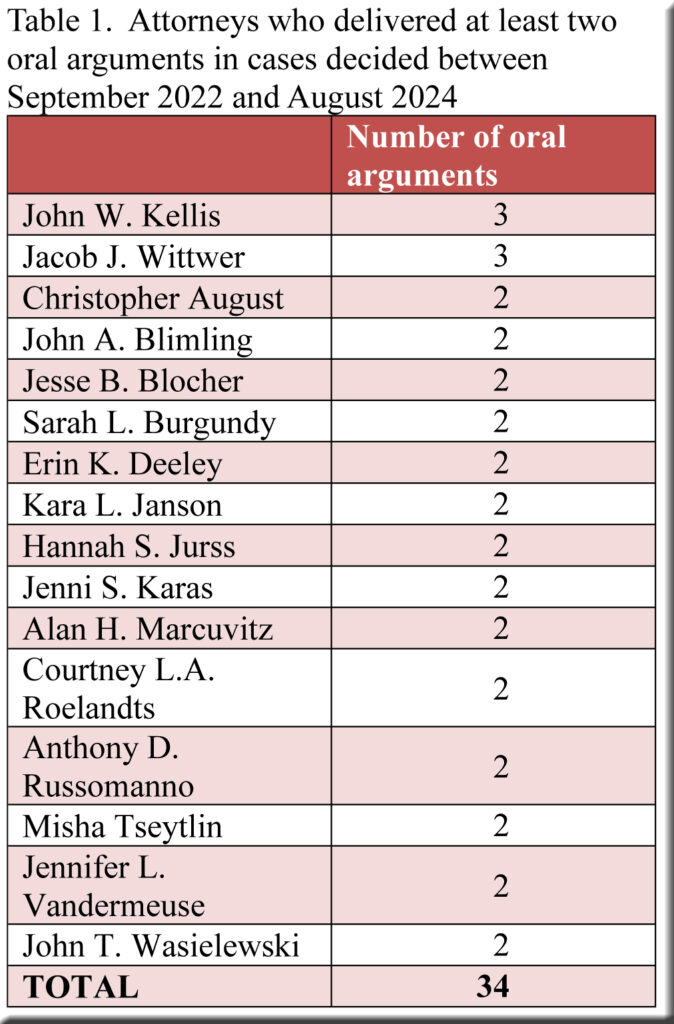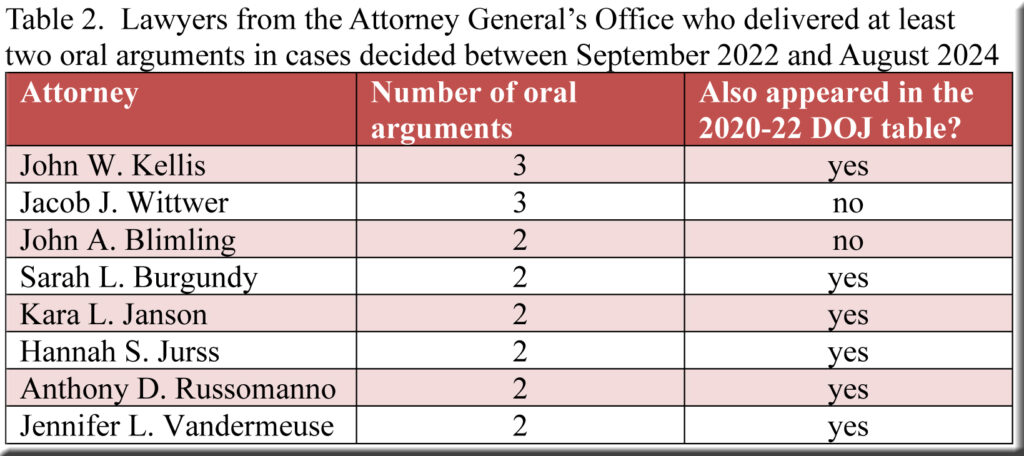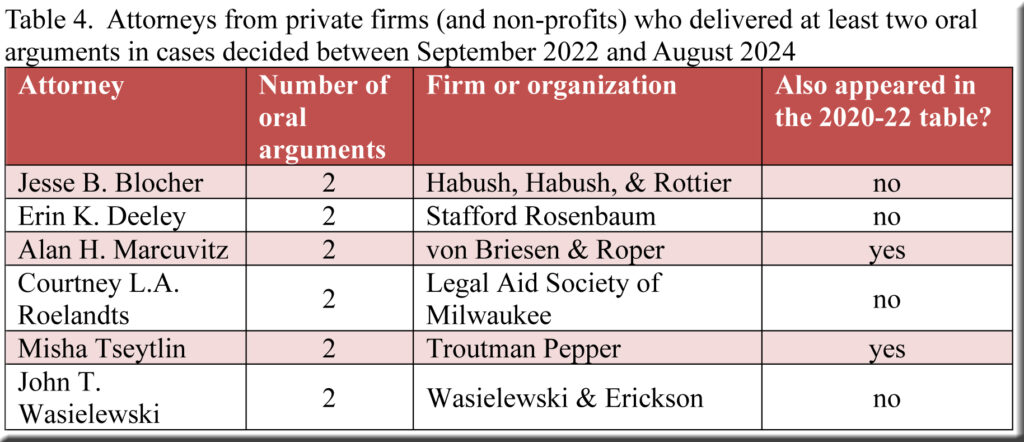It’s time again for the biannual survey of attorneys who deliver frequent oral arguments at the Wisconsin Supreme Court. Our tables differ considerably from those of earlier posts,[1] reflecting the dramatic change in the court’s output.
The most active attorneys
During the last two terms (2022-23 and 2023-24), 116 attorneys appeared before the justices.[2] Nearly all did so only once, but 16 among them conducted at least two arguments, and they are recognized in Table 1.
These numbers are extremely low—an obvious consequence of the dwindling quantity of decisions (59) during the two terms under review.[3] Compare the 16 attorneys and their 34 arguments with the figures generated for the two preceding terms (2020-21 plus 2021-22), when the court filed 103 decisions. During this interval, 42 attorneys made at least two appearances, and their argument total reached 115—close to three and a half times the 34 in Table 1.[4]
Attorney General’s Office
As the state’s representatives in both civil and criminal appeals, it’s scarcely surprising that lawyers from the Attorney General’s Office have occupied a prominent position throughout this series of posts, and they continued to do so in 2022/23-2023/24.[5] Among lawyers with two or more arguments, assistant attorneys general were exceptionally dominant. Listed in Table 2, they delivered 18 oral arguments in 2022/23-2023/24—53% of the total for everyone in Table 1 and well above their portions in equivalent tables for 2018/19-2019/20 (41%) and 2020/21-2021/22 (44%).[6]
State Public Defender’s Office
The dearth of cases in 2022/23-2023/24 nearly stripped our tables of public defenders. Just one, Christopher August, made the list of attorneys with a minimum of two oral arguments, and his total of two amounted to only 6% of the 34 appearances by this group (Table 1). In contrast, six public defenders presented at least two oral arguments in 2020/21-2021/22—14 arguments in all, which made up 12% of the arguments by attorneys who conducted more than one.
Private firms and non-profits
As it did to the number of attorneys from the Department of Justice and the Public Defender’s Office, the court’s shrinking volume of decisions also thinned the ranks of lawyers who appeared before the justices on behalf of private firms and non-profits. The six people in Table 4 are only one-third the number in the comparable table for 2020/21-2021/22, and their total of 12 arguments is less than a quarter of the 50 arguments from this category of attorneys during the two preceding terms.
While no lawyer in Table 4 accounted for more than two arguments, Richard Esenberg alone conducted seven in 2020/21-2021/22, and Misha Tseytlin added five—by themselves, matching Table 4’s total of 12 for 2022/23-2023/24.
[1] The two previous updates each covered two terms: 2018/19-2019/20 and 2020/21-2021/22.
[2] These 116 attorneys delivered a total of 134 oral arguments—including arguments in four cases later dismissed as improvidently granted (two cases in 2022-23 and two in 2023-24). The data in this post are assigned to the term in which the case was decided. In other words, if a case was argued during one term, but not decided until the following term, the oral arguments in that case are included in the figures for the latter term.
[3] Along with the 59 decisions, the tables in this post include the four oral arguments (noted above) delivered in cases dismissed as improvidently granted (two each in 2022-23 and 2023-24).
[4] I notice that the data compiled from the 103 decisions filed in 2020/21-2021/22 do not include three cases dismissed as improvidently granted.
[5] During these two terms, 22 assistant attorneys general conducted at least one argument, accounting for 32 arguments altogether—a quarter of the 134 appearances by all attorneys. In 2020-21 and 2021-22, 32 assistant attorneys general delivered at least one argument, accounting for 66 altogether—27% of the 246 appearances by all attorneys.
[6] To avoid confusion, it bears reiterating that the percentages pertain to attorneys who conducted at least two oral arguments in cases decided during the periods in question.




Speak Your Mind